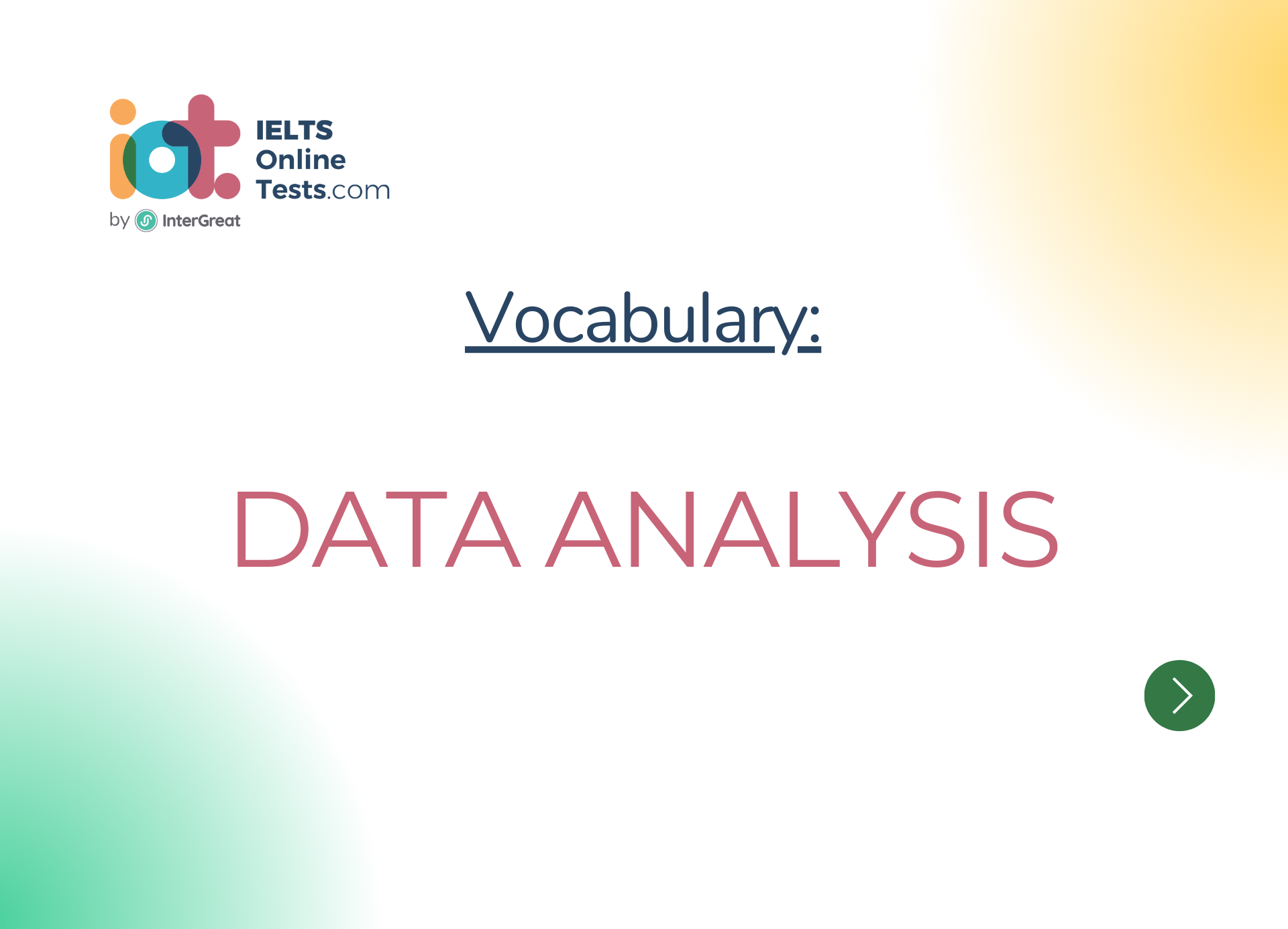
Data analysis
Here are some vocabulary words related to data analysis for the IELTS band score range of 4.5-6.0:
Data Analysis
The process of examining, cleaning, transforming, and interpreting data to discover useful information and draw conclusions.
Quantitative Data
Data that can be measured and expressed in numbers.
Examples include age, height, scores, and income.
Qualitative Data
Data that is descriptive and cannot be measured in numbers.
Examples include observations, interviews, and open-ended survey responses.
Descriptive Statistics
Methods used to summarize and describe data.
Includes measures like mean, median, mode, range, and standard deviation.
Inferential Statistics
Methods used to make predictions or draw conclusions about a population based on a sample.
Involves hypothesis testing and confidence intervals.
Data Visualization
Representing data visually through charts, graphs, and plots.
Helps in understanding patterns and trends.
Frequency Distribution
A table or graph that shows how often different values occur in a dataset.
Central Tendency
A measure that represents the center or average of a distribution.
Includes mean, median, and mode.
Variability
The extent to which data points in a dataset differ from each other.
Measures include range, variance, and standard deviation.
Regression Analysis
A statistical method that examines the relationship between a dependent variable and one or more independent variables.
Helps in predicting outcomes.
Correlation Coefficient
A measure of the strength and direction of the relationship between two variables.
Ranges from -1 to 1, where -1 indicates a perfect negative correlation, 1 indicates a perfect positive correlation, and 0 indicates no correlation.
Data Mining
Using statistical techniques and algorithms to discover patterns and relationships in large datasets.
Statistical Software
Computer programs designed for data analysis, such as SPSS, Excel, R, and Python.
Outliers
Data points that are significantly different from other data points in a dataset.
They can impact the results of data analysis and may need special treatment.
Confidence Interval
A range of values within which the true population parameter is likely to fall.
Provides a measure of uncertainty in estimates.
Statistical Significance
A result is considered statistically significant if it is unlikely to occur by chance alone.
Indicates that the observed effect is real and not due to random variation.
Data Interpretation
Making sense of the results obtained from data analysis and drawing meaningful conclusions.
Data Cleaning
The process of identifying and correcting errors or inaccuracies in a dataset.
Sampling Error
The difference between a sample statistic and the true population parameter.
Due to random variation in the selection of the sample.
Cross-tabulation
A method of analyzing data by creating a table that shows the relationship between two or more variables.
Sampling Methods
Techniques used to select a representative sample from a larger population.
Examples include random sampling, stratified sampling, and convenience sampling.
Statistical Tests
Procedures used to analyze data and determine if there are significant differences between groups or conditions.
Examples include t-tests, ANOVA (Analysis of Variance), and chi-square tests.
Hypothesis
A testable statement or prediction about the relationship between variables.
In data analysis, hypotheses are often tested using statistical tests.
Null Hypothesis (H0)
A hypothesis that suggests there is no significant difference or relationship between variables.
It is often the default assumption in statistical testing.
Alternative Hypothesis (H1)
A hypothesis that contradicts the null hypothesis and suggests there is a significant difference or relationship between variables.
Confounding Variable
- An extraneous variable that influences both the dependent and independent variables, making it difficult to determine their true relationship.
Statistical Power
The probability of correctly rejecting the null hypothesis when it is false.
High statistical power indicates a higher chance of detecting significant effects.
Interquartile Range (IQR)
A measure of statistical dispersion that represents the range of the middle 50% of data values in a dataset.
Statistical Distribution
The pattern of data spread over different values in a dataset.
Examples include normal distribution, skewed distribution, and binomial distribution.
Correlation Matrix
A table that shows the correlation coefficients between multiple variables in a dataset.
By familiarizing yourself with these vocabulary words, you will be better equipped to discuss data analysis concepts and techniques in English for the IELTS exam. Practice using them in context to improve your language skills. Good luck with your studies!




